- filed under: Getting Started, Outdoor Classroom Set Up
Teaching Prep Outside
My role as a teacher is always evolving. Over the past 25 years, I’ve taught just about every grade in public elementary schools across two provinces. For the past seven years my role has been teaching prep outside. This position emerged through an innovative re-think of how we allocate prep time in our school. The position is now full time, and job shared between myself and Sarah Regan. We teach entirely outside from 8:45- 2:45 daily and a new class of students comes to learn in the garden every 55 minutes. That means each participating class receives 110 minutes of learning outdoors, year-round, in all weather conditions.
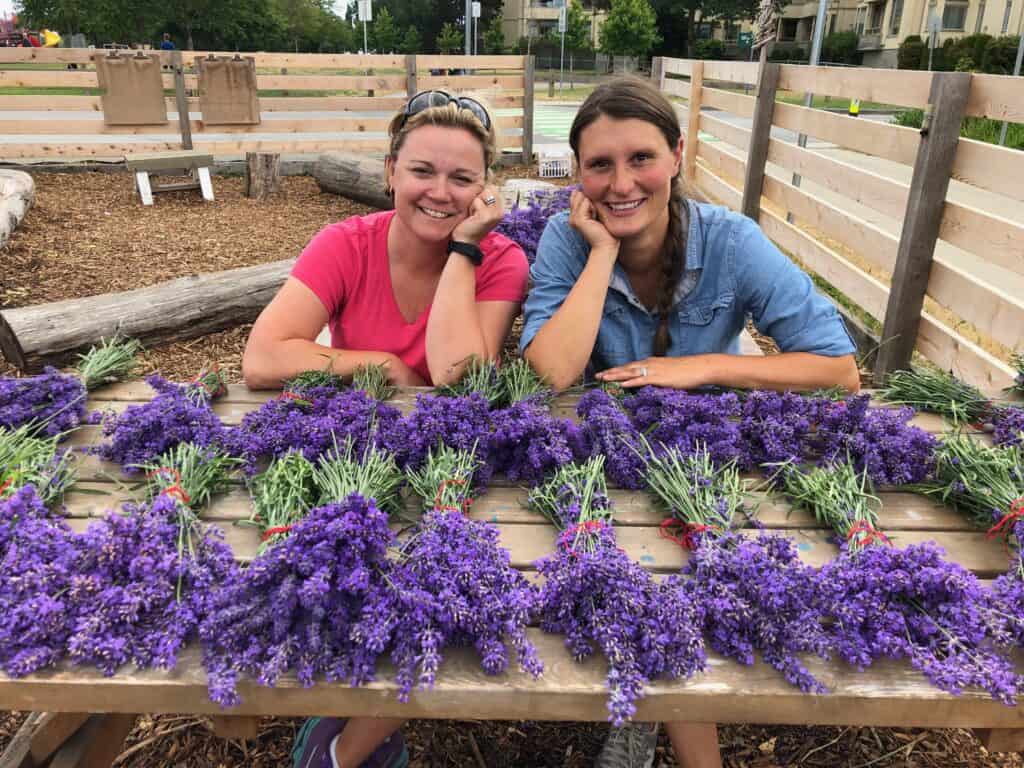
Teaching Prep Outside
To help facilitate everyone’s comfort learning outdoors we started a lending library of boots, rain pants, and rain jackets. Children and families are welcome to borrow what they need, with the understanding they will return the items when they are done with them, and make a donation to the collection at some point. Some children borrow items for the entire year, some borrow items for a day if they forgot their gear at home. Most children come dressed for the weather conditions, some choose not to, but every child is offered a reasonable alternative if they are not dressed for learning outside. Our collection has mainly grown from salvaged lost and found items, donations from families, and targeted purchases to fill in the gaps.
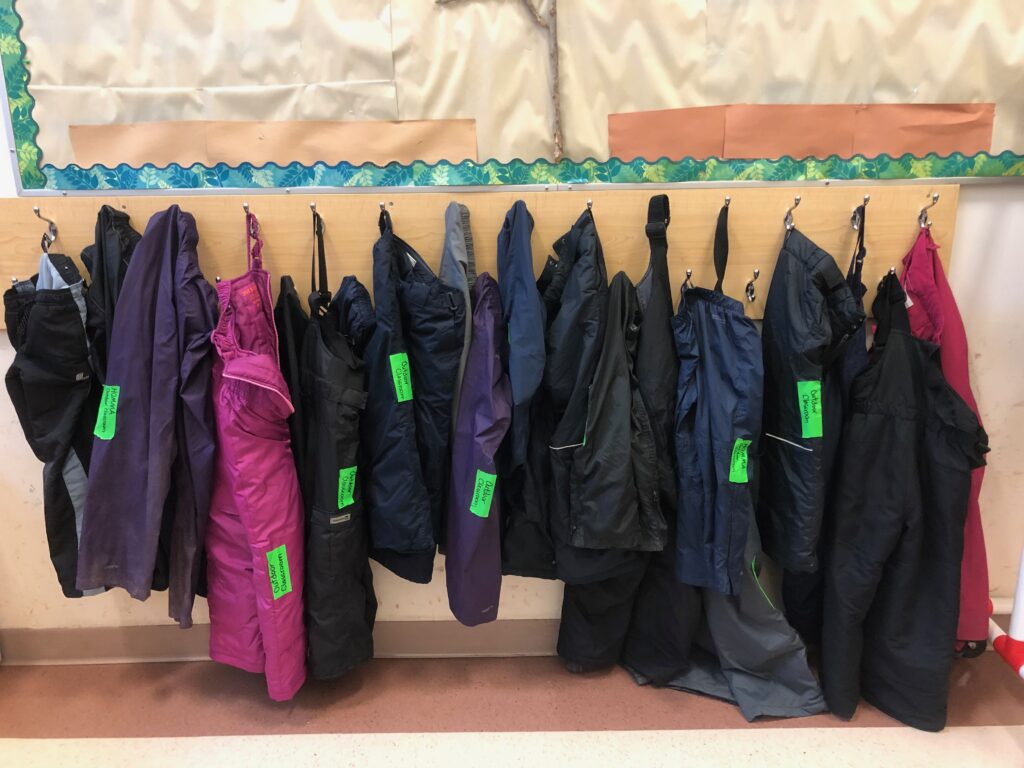
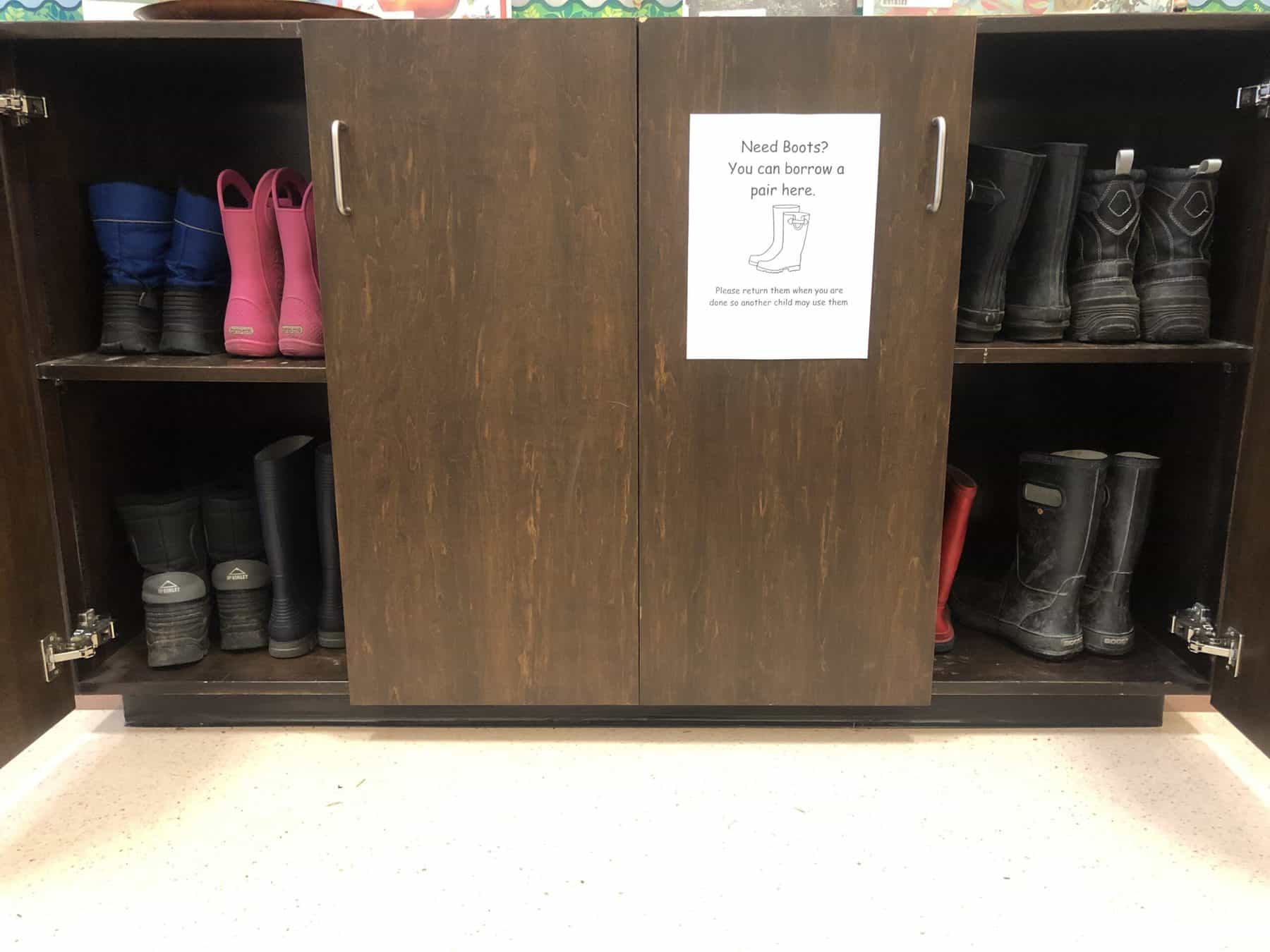
Our planning is emergent, which means we still have a year plan, term plans, and even monthly plans for what we expect to teach in the outdoor and garden classroom, but that we are open to the learning that emerges daily, and responsive to the weather, seasonal changes, and the wonders and curiosity of our students. We have found this approach results in even more curricular content being meaningfully explored than if we stick to pre-determined lesson or unit plans. We are confident that every single big idea, core and curricular competency can be taught in our outdoor and garden classroom!
Our School Garden Classroom
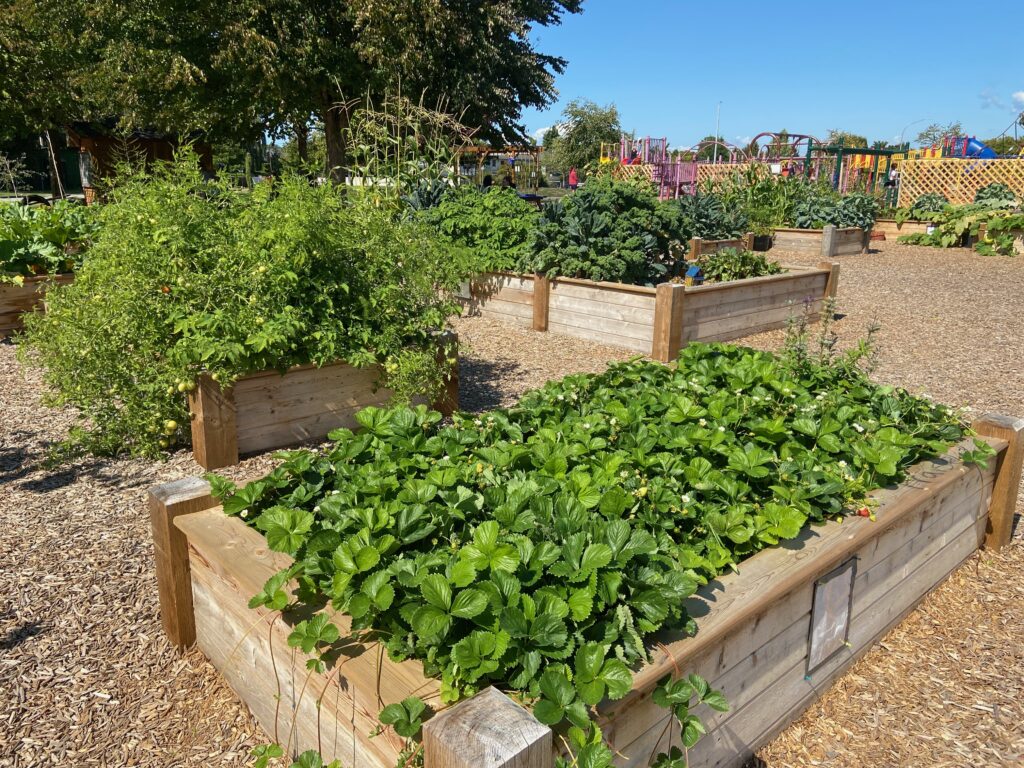
We use the terms outdoor classroom and garden classroom interchangeably since the garden is a part of our outdoor classroom. During the growing and harvest seasons our daily work is focussed on the garden, and the multiple entry points for learning it provides across the curriculum. A big focus of our work revolves around food literacy and environmental sustainability within a framework of nature play. We believe strongly in the importance of play in children’s gardens and that no garden should be so precious that children are not free to play in it. Play is the work of children, and if we want children to feel attached to the garden, care about the crops we grow, and become sustainable stewards of our environment, then they need room to play within the school garden. Here are some links to related posts about how we support play in the school garden:
RELATED POST: HOW TO BUILD A DINOSAUR GARDEN
RELATED POST: HOW TO BUILD A BUG HOTEL
RELATED POST: HOW TO BUILD A FAIRY GARDEN

When we first began teaching outdoors, we did not have a shed, or tables, which made it challenging to haul garden and teaching supplies back and forth daily. We now have four tables that were built by our grade 6/7 classes as part of an ADST unit and a shed that was built by parent volunteers. We also have a drip irrigation system that waters the garden during the summer months. Funding for these projects changes yearly, and an up-to-date list of available school garden grants can be found here.
RELATED POST: BC SCHOOL GARDEN GRANTS

Loose Parts Play
The children are entirely responsible for the planting, watering, and harvesting of our school garden. They do an amazing job too, but the school year does not line up exactly with the growing season, so much of our winter months are spent playing outside. As such, we have developed cross-curricular nature play opportunities that are very popular with the students, and have been successful in reducing many of the issues public gardens face. For example, we leave most of our large and small loose parts out for the community to enjoy outside of school hours. This means our play areas have families and children visiting them on weekend, evenings, and during summer breaks. The benefit of this is a significant reduction in vandalism and theft from our school gardens. Here are some related posts about how we support loose parts play in the garden:
RELATED POST: HOW TO BUILD A MUD KITCHEN
RELATED POST: BEST BOOKS FOR INTRODUCING LOOSE PARTS OUTSIDE
RELATED POST: RISKY PLAY WITH TOOLS
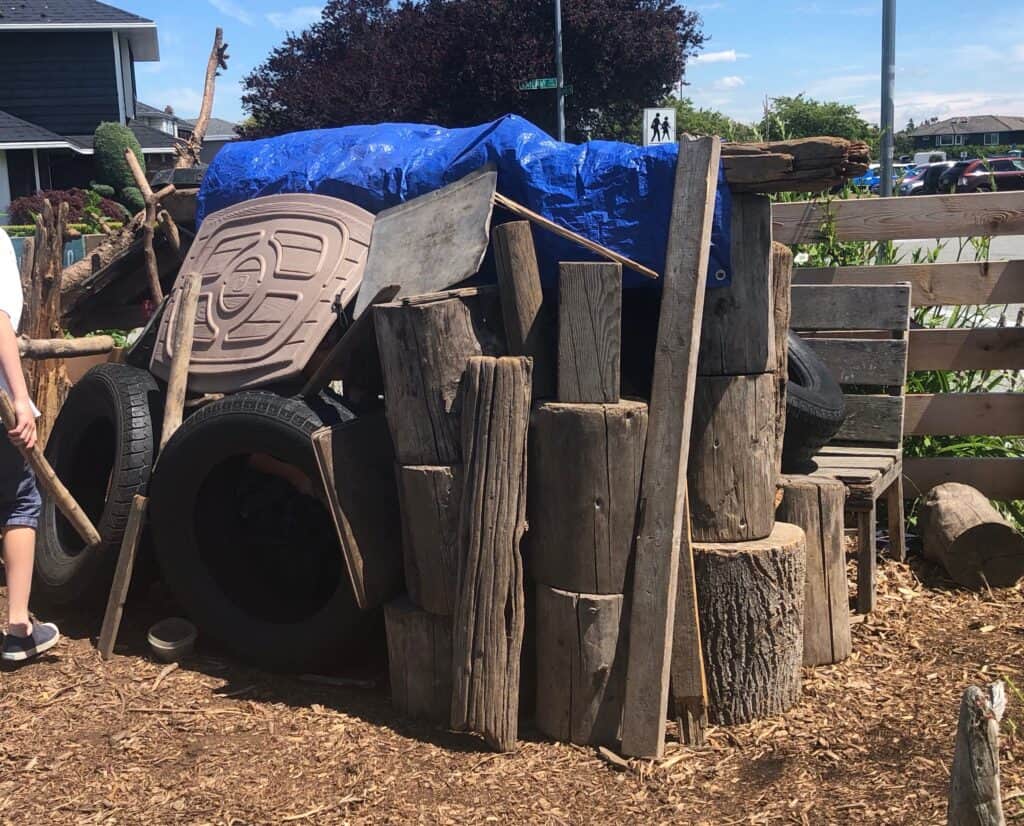
Questions About Teaching Prep Outside
We receive many questions from teachers and schools considering this model of how we allocate prep time. Here are some of the common questions:
Do you provide report card comments for teachers?
Yes. We provide a bank of comments for teachers from across the curriculum and core competencies. Teachers can choose which comment they would like to include in their final reports. Teachers participating in alternative reporting have images uploaded to the portal by us so children can then reflect on their learning outdoors using their online portfolio.
What happens to the garden in the summer?
We have a sign up for families who are interested in caring for the garden during the summer months. Usually one or two families take on a single week of garden care each during the summer. Families are asked to water the garden, tidy up the play areas, stay on top of the weeding, and maintain a presence in the garden during the summer.
What do you do in the rain?
We do not have an indoor classroom to teach in so we go outside, no matter what! Sarah and I have really good rain gear for teaching outside all day and the kids are offered rain gear if they are not prepared for the weather. There is lots to do in the rain, maybe one day I’ll write an entire book of ideas! One of our favourite rainy day activities is to set up a tarp and sit under it. Most of our students have never been camping, or at least don’t go camping in the rain, so sitting under a tarp and reading a story, or listening to the rain fall is a pretty magical experience for them. Here is a post I wrote on how to play in the rain, and here is one with all of my favourite books about the rain.
Learn More!
Do you have more questions about how teaching outside all day looks? Contact me here and I’ll add your question to the list! We recommend WestCoast seeds as a resource for beginning school gardeners and Outdoor Play Canada for nature play enthusiasts. In February of 2021 we co-hosted a webinar on how to set up this position. The webinar can be viewed here:
If you are on Pinterest, I have lots of curated specific to teaching outdoors. You can follow me here:
